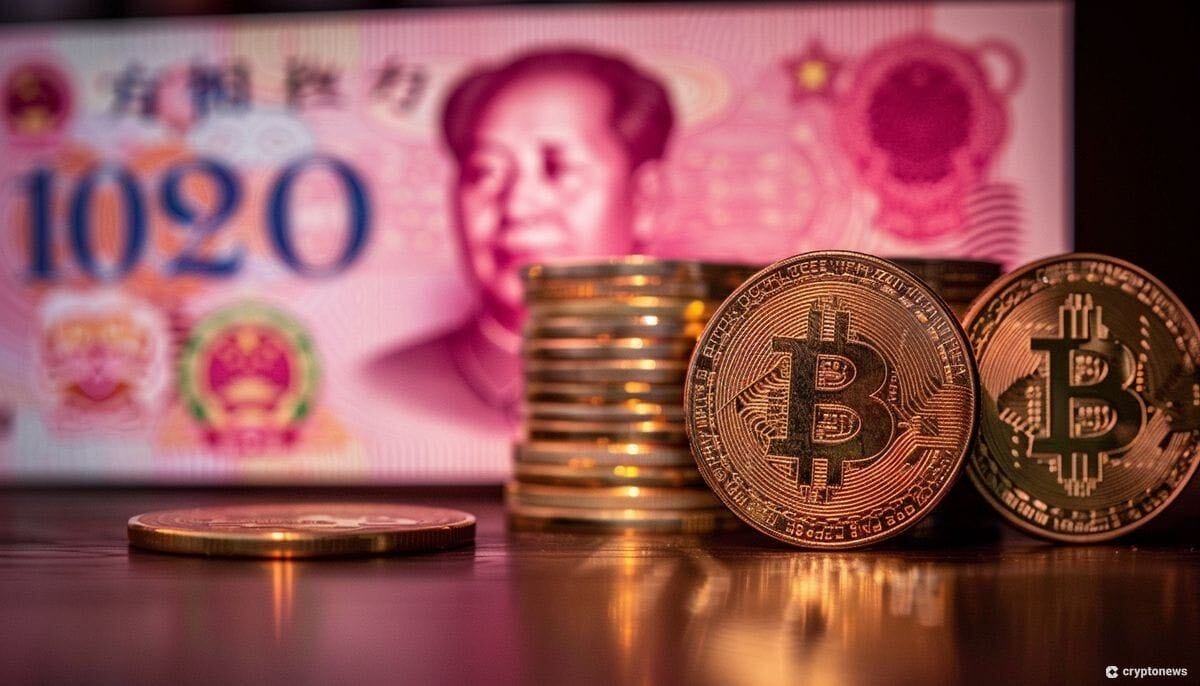Last updated:
 Why Trust Cryptonews
Why Trust Cryptonews

China’s central bank digital currency (CBDC) app, e-CNY, recorded 180 million personal wallets and transactions worth ¥7.3 trillion ($1.02 trillion) by July 2024, in its ongoing pilot program.
This milestone reflects China’s commitment to modernizing its financial system, with the CBDC already reshaping how money is transferred.
China’s CBDC Growth: Expanding Transactions and New Features
On October 11, a report by local news outlet Finance.Sina quoted Mu Changchun, Director of the Digital Currency Research Institute at the People’s Bank of China (PBoC), explaining how China’s CBDC aligns with the needs of the digital economy.
Mu elaborated on how China’s CBDC, also called “digital RMB,” operates through two models: the account model and the value model.
The account model allows the digital RMB to integrate with traditional bank accounts, making it user-friendly, while the value model enables users to exchange money using coin strings, facilitating smart payments on blockchain.
This flexibility allows China’s CBDC to be used offline, in areas without internet or electricity, providing smoother transactions in a variety of environments.
Mu also emphasized that while the digital RMB has already processed ¥7.3 trillion worth of transactions, the focus remains on enhancing user experience and service improvements.
The system now supports diverse payment methods, such as scanning QR codes, as well as newer features like payments without electricity and using mobile SIM cards.
The PBoC is also expanding where China’s CBDC can be used, particularly in public services like transportation, including buses and subways.
To strengthen the digital RMB’s efficiency, Mu stressed the need to improve support systems, ensuring that China’s CBDC operates securely and seamlessly across banks and institutions.
Challenges in Adopting China’s CBDC
A South China Morning Post report highlighted concerns from Sammy Lin, an account manager at a Suzhou-based state-owned bank, who observed hesitancy among users, including herself, to store funds in digital yuan wallets.
The primary reasons include the limited functionality of digital wallets compared to traditional accounts and the absence of interest earnings.
Another key concern revolves around the traceability of China’s CBDC, raising questions over privacy and security.
Many users fear that their financial data could be exposed, leading some to convert their digital currency back into cash to avoid these risks.
Despite these challenges, China continues to lead the global race for central bank digital currencies (CBDCs).
As of September 2024, 134 countries have been exploring CBDCs, a notable rise from just 35 in 2020, according to data from the Atlantic Council.
Among them, 65 nations, including major economies like India, Brazil, and Australia, are in advanced stages of CBDC development or pilot testing.
China’s next steps will be crucial as it continues to innovate and address user concerns to ensure broader acceptance of its digital currency.





